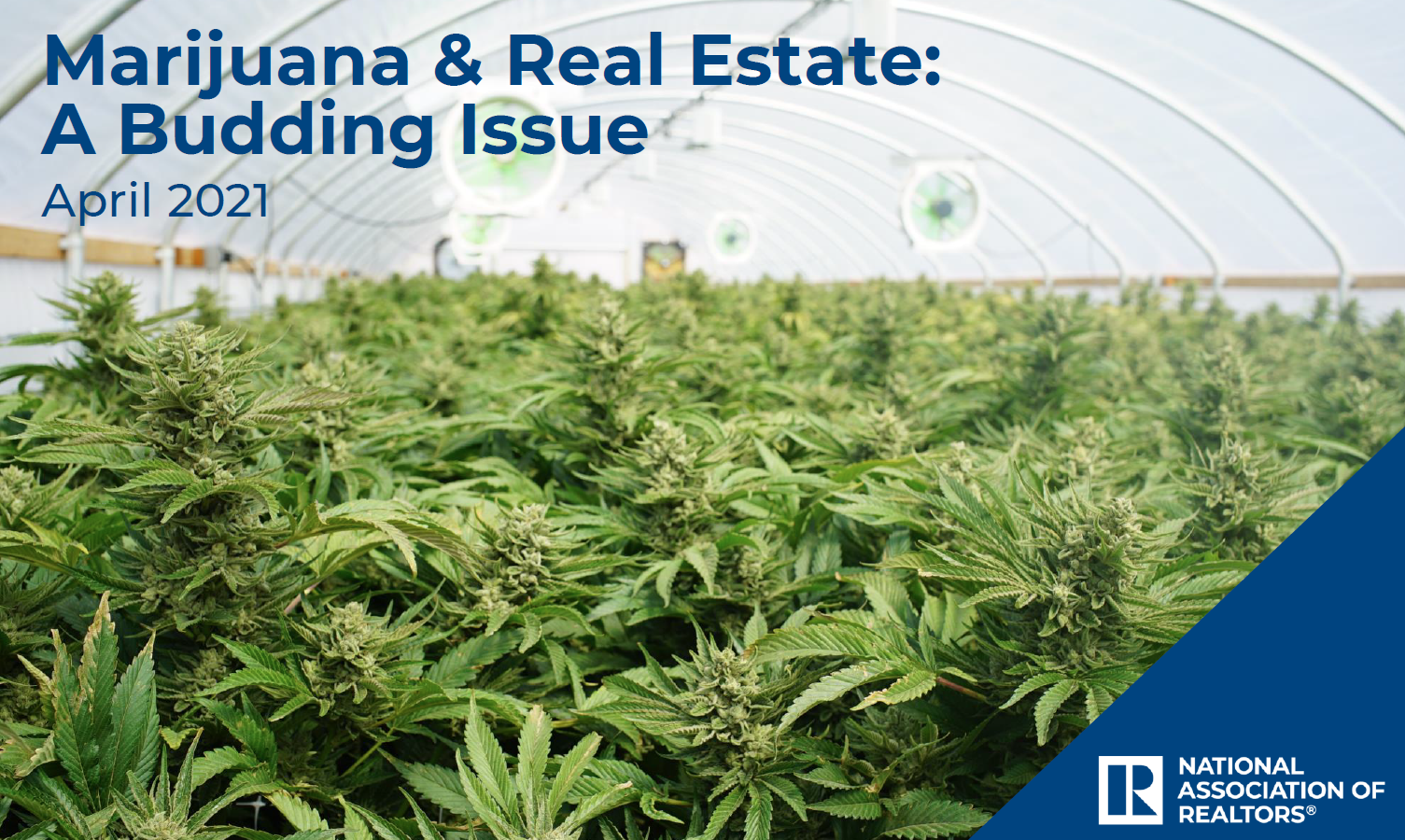
As Lease Addendums Rise, Marijuana Businesses Adapt by Purchasing Commercial Property
Key Highlights
- Members residing in states with legalized marijuana saw an increase in demand for warehouses.
- Nearly half of those in states that legalized marijuana prior to 2016 have seen addendums added to leases restricting growing on properties.
- There is an increase in purchasing properties for marijuana-related businesses instead of leasing.
WASHINGTON (April 16, 2021) – As marijuana becomes legalized in more parts of the country and as an increasing number of states grow, harvest, store, sell and allow consumption, the nation’s real estate industry has felt the effects.
According to a new report from the National Association of Realtors®, there has been a noticeable rise in demand for warehouses, land and store fronts used for marijuana. The 2021 survey, Marijuana and Real Estate: A Budding Issue, examines the legality of marijuana in terms of medical only, legalized medical and recreational prior to or after 2016.
More than one-third of respondents in states where marijuana has been legalized the longest said inventory was tight for multiple reasons and cited the marijuana industry as one of the factors. This is also true for those in areas where marijuana was more recently legalized, as 23% of Realtors® also partially blamed the marijuana industry for the limited inventory.
“The dynamics of marijuana have been far-reaching over the past year, which is evident when you see how it has impacted real estate,” said Jessica Lautz, vice president of demographics and behavioral insights for NAR. “As the marijuana laws continue to evolve, Realtors® have witnessed increased demand for commercial properties to store, grow and sell marijuana.”
Additionally, 29% of commercial members in states that legalized recreational marijuana during the past four years reported growth in property purchasing over leasing in the last year. Nearly half of those in states that legalized both medical and recreational marijuana before 2016 have experienced addendums added to residential leases restricting growing on properties, compared to one quarter or less in other states. Sixty-nine percent of commercial members in states where only medical marijuana is lawful said that no additional addendums were inserted to their leases concerning marijuana plants. This is compared to 45% to 55% of those where medical and recreational use are legal.
Possibly in an effort to steer clear of landlord addendums, some business owners outright bought property rather than leasing. In these cases, business owners no longer had to adhere to marijuana rules or regulations that they may have considered burdensome. This trend was seen the most in states where marijuana is newly legal.
Among respondents in states where recreational marijuana is legal, they more often answered that homeowner associations regularly had some policies or restrictions in place pertaining to smoking and growing the product in common areas or exposed areas. Nearly half of homeowner associations were against smoking in common areas, while about two-fifths prohibited growing in mutual open areas, such as a private yard without fences.
Those surveyed within states with only prescription marijuana said there often were not any homeowner association rules and regulations related to marijuana.
“We saw that a number of property owners at some point in the past had difficulty leasing their property after a previous tenant consumed marijuana there over an extended period,” said Lautz. “To avoid repeats of those issues, landlords have implemented various guidelines that place numerous restrictions on the use of marijuana.”
Lautz says property owners who have imposed such constraints tend to reside or own property in states where marijuana has been legal the longest.
“As the marijuana industry evolves, both commercial and residential landlords are balancing efforts to profit from the progressions, while also ensuring that their property remains desirable and at a high value,” Lautz continued.
Methodology
The 2021 Marijuana and Real Estate survey was sent through email in March 2021 to a random sample of 75,000 NAR members who practice residential real estate and 72,000 NAR members who practice commercial real estate. The survey received 8,320 responses for an overall response rate of 5.7%.
The National Association of Realtors® is America’s largest trade association, representing more than 1.4 million members involved in all aspects of the residential and commercial real estate industries.
Source: "www.nar.realtor"











Comments